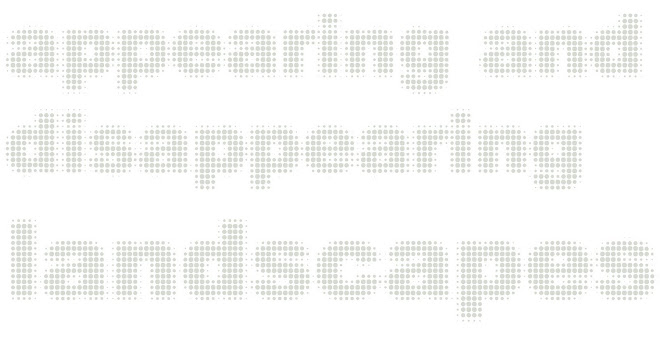
16 March 2010
Relationskip between players II

I have tried to look at the relationship between (my hopefully?!) new players in imbedded information II. Still a bit messy.:)
15 March 2010
Vertical Farming: Potatoes? They're on the Fifth Floor

Vertical farming is a proposed agricultural technique involving large-scale agriculture in urban high-rises or "farmscrapers". Using recycled resources and greenhouse methods such as hydroponics, these buildings would produce fruit, vegetables, edible mushrooms and algae year-round.
But so far it exists only in plans and drawings, and a model at the Museum of Science and Industry in Chicago.
Because building a farmscraper would cost too much, especially considering the price of land in many cities.
It seems crazy to build such a high-rises farm in Jaeren. But the agriculture today is still "two-dimensional", it can be develop to "3D".I mean if we use the vertical space, the production canbe double,even more.
On the other hand, todays’ intensive agriculture is considered to be the main agent responsible for the decline of plant species. Species diversity become more and more important to our environment. Maybe there should be a secret garden for them in Jaeren.
BTW, when I sent e-mail to Landbruks- og matdepartementet asking about the agriculture in Jaeren, they forward the request to the County Governor of Rogaland.
Here is the link to their website in English. http://www.fylkesmannen.no/hovedEnkel.aspx?m=10517
Good luck to me and everyone.^-^
14 March 2010
Second version of imbedded information

 This is my second version of “imbedded information”. The expanding urban areas in Jaeren is also a part of the expanding urban areas in the rest of the world. Agricultural land is under pressure. The urban citizens of Jaeren also affect the rest of the world through their ecological footprint caused by food- production. Is it possible to make a alliance between the expanding urban areas and the lack of energy/ecological solutions?
This is my second version of “imbedded information”. The expanding urban areas in Jaeren is also a part of the expanding urban areas in the rest of the world. Agricultural land is under pressure. The urban citizens of Jaeren also affect the rest of the world through their ecological footprint caused by food- production. Is it possible to make a alliance between the expanding urban areas and the lack of energy/ecological solutions?12 March 2010
-update-
2 possible projects:
- green infrastructures for better life quality in the city
- green infrastructures as a research object in the wet climate
how the public-green infrastructure should be planned and developed in order to keep its function during the seasons? Specially during WET winters, or interchanging seasons... western Norway is one of the wettest regions in Europe – rain being more common than snow in winter...
I wanted to focus on this issue some time ago....just needed a motivation or argumentation for: why am I dealing with public spaces in Jaeren region?....then...all the population growth and oil impact on social welfare research started....i needed some specific fact which could lead me to public-green infrastructure...but maybe the fact of wet climate, and also that the climate is warming in general, could be a good reason for research and some solutions?...
10 March 2010
"Naturreperatørene" - "Naturerepairman"
 The program, titled "Naturreperatørene" was shown on NRK1. This element was shown a few pages of the Wetlands group's activity in Hedmark.This is a very interesting project that shows that it is possible with simple measures to give something back to nature. This is a Norwegian software and is not texted in English, but I think the pictures speak for themselves. Very exciting:)
The program, titled "Naturreperatørene" was shown on NRK1. This element was shown a few pages of the Wetlands group's activity in Hedmark.This is a very interesting project that shows that it is possible with simple measures to give something back to nature. This is a Norwegian software and is not texted in English, but I think the pictures speak for themselves. Very exciting:)1 March 2010
25 February 2010
How and of whom should the land be used?



 The city of Stavanger, Sandnes and the towns along the railway are still growing. Place is needed.
The city of Stavanger, Sandnes and the towns along the railway are still growing. Place is needed.But one of the most important economical sektors of Jæren - the agriculture - needs a lot of land as well. The conflict is preassigned.
So what to do? Who will get the land? Are there other possibilities? Which ones? And what problems follows out of this?
24 February 2010
Imbedded information
 The North Sea is one of the busiest sea-scapes in the world surrounded by land and human activity. In Imbedded information I unfold more actors hidden under the surface, but I also realize that the the fi eld area must be enlargened to include the whole drainage bassin of the North Sea where 184 million people live! The actors on land become as important influencing the north sea ecostystem. In try to geolocate all the actors.
The North Sea is one of the busiest sea-scapes in the world surrounded by land and human activity. In Imbedded information I unfold more actors hidden under the surface, but I also realize that the the fi eld area must be enlargened to include the whole drainage bassin of the North Sea where 184 million people live! The actors on land become as important influencing the north sea ecostystem. In try to geolocate all the actors.The weak voice of Jæren
 I have found the weak voice of Jæren and followed its footsteps through the landscape to find its meaning. Then I can hear what it is trying to tell me and ask questions.
I have found the weak voice of Jæren and followed its footsteps through the landscape to find its meaning. Then I can hear what it is trying to tell me and ask questions.





